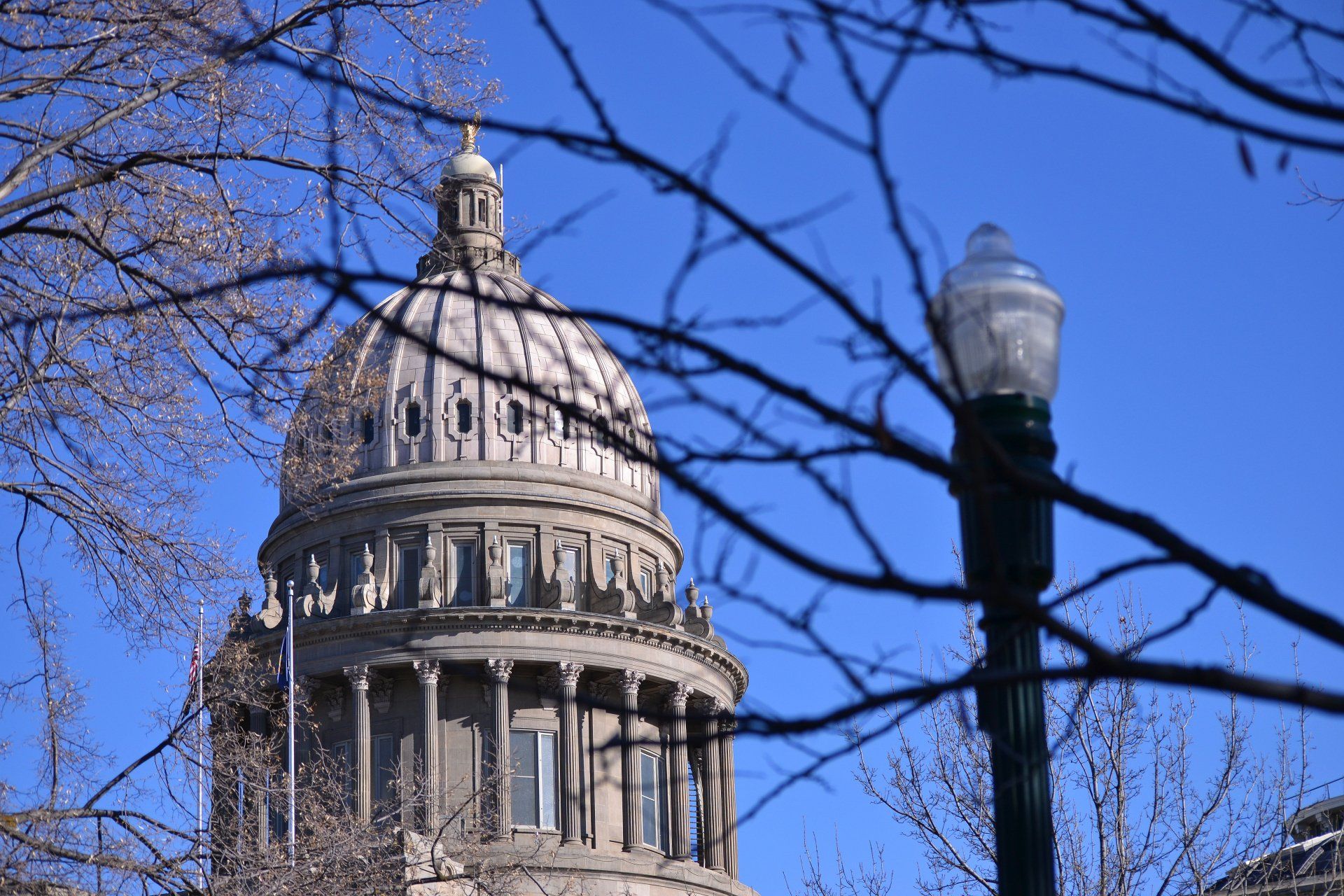Discover Idaho's Healthcare Ranking Compared to Other States

Idaho ranks 46th in healthcare quality and eighth worst in the country for healthcare access. The state faces significant barriers to accessing medical care, with limited providers, a high uninsured rate of 10.8%, and low per-capita expenditure on healthcare.
Idaho’s healthcare system is plagued by shortages of doctors, dentists, and mental health professionals, resulting in limited access to quality care. The state’s low investment in healthcare infrastructure and high health insurance premiums further exacerbate the issue.
To understand the complexities of Idaho’s healthcare landscape and potential solutions to these challenges, it is essential to examine the underlying factors contributing to these rankings. You can also check out Chris Antrim Insurance - Medicare and Health Insurance Broker.
Contact Us
Key Takeaways
- Idaho ranks as the eighth worst state in the U.S. for healthcare, indicating significant challenges in the state’s healthcare system.
- The state has limited access to care, particularly in rural areas, due to a shortage of healthcare providers, including doctors, dentists, and mental health professionals.
- Idaho’s per capita expenditure on healthcare is $104, lower than other states, contributing to poor health outcomes and limited healthcare infrastructure.
- The state ranks 46th in healthcare quality, with limited healthcare infrastructure and providers affecting the quality of care.
• Idaho’s high uninsured rate of 10.8% and limited hospital bed capacity further exacerbate the state’s healthcare challenges.
Idaho’s Healthcare Rankings Overview
How does Idaho’s healthcare system stack up against others in the nation, and what factors contribute to its ranking as the eighth worst state in the U.S. for healthcare?
A closer examination of the state’s healthcare landscape reveals several key areas of concern. In terms of health care quality, Idaho struggles with limited access to care, particularly in rural areas. The state has fewer providers per capita, including doctors, dentists, and mental health professionals, compared to other states. This shortage of providers can lead to delayed or foregone care, ultimately affecting health outcomes.
Furthermore, Idaho’s spending on healthcare is lower than other states, with a per capita expenditure of $104, which may contribute to the state’s poor healthcare ranking. The combination of these factors results in a healthcare system that falls short in terms of access to care and health care quality.
As a result, Idaho’s healthcare system requires attention and improvement to address these deficiencies and improve overall health outcomes for its residents.
Healthcare Access in Idaho
In addition to its healthcare system’s shortcomings, Idaho’s residents face significant barriers to accessing medical care, exacerbating the state’s poor healthcare ranking. Idaho ranks as one of the worst states in the country for healthcare access, with a shortage of providers per capita, including doctors, dentists, and mental health professionals. This scarcity of healthcare professionals hinders access to medical care, particularly for rural communities.
Moreover, Idaho’s high uninsured rate of 10.8% means that many residents lack the financial means to access healthcare services. The state’s low investment in healthcare, with only $104 spent per capita, further compounds the issue. This lack of investment in healthcare infrastructure and workforce has resulted in limited healthcare access, making it challenging for residents to receive timely and quality medical care.
Idaho’s healthcare system must address these shortcomings to improve healthcare access and ultimately enhance the overall well-being of its residents.
Idaho’s Life Expectancy Rates
Idaho’s struggles with healthcare access and affordability are reflected in the state’s life expectancy rates, which vary considerably across different counties and even census tracts. The disparities in life expectancy are stark, ranging from 74.8 years in Benewah County to 85.2 years in Blaine County.
| County | Life Expectancy (Years) |
|---|---|
| Benewah | 74.8 |
| Blaine | 85.2 |
| Ada | 81.5 |
| Valley | 80.3 |
These variations in life expectancy highlight significant health challenges in Idaho. Social, economic, and environmental factors all influence life expectancy, leading to significant disparities across the state. Additionally, data gaps in certain areas of Idaho hinder our understanding of health outcomes.
At the census tract level, the disparities in life expectancy are even more pronounced, underscoring the need for targeted interventions to address localized health challenges. By acknowledging these disparities, Idaho can work towards reducing health inequities and improving overall population health.
Top States for Healthcare Quality
Ranking 46th in healthcare quality, Idaho trails behind other states in providing quality care to its residents, with significant challenges in healthcare access and quality. The state’s limited healthcare infrastructure, including fewer hospital beds per capita, contributes to these challenges.
Additionally, Idaho lags behind in the number of providers per capita, including doctors, dentists, and mental health professionals, further restricting access to quality health care. This shortage of providers exacerbates healthcare disparities, particularly for the 10.8% of uninsured residents, who often delay or forgo necessary medical care.
Idaho’s low investment in healthcare, with only $104 per capita spent on healthcare, also hinders the state’s ability to improve health outcomes. As a result, Idaho’s healthcare system struggles to provide quality care, leading to subpar health outcomes for its residents.
To improve healthcare quality, Idaho must prioritize increasing access to healthcare providers and investing in its healthcare infrastructure. By doing so, the state can work towards bridging the gap in healthcare quality and improving health outcomes for its residents.
Idaho’s Physician Availability
Limited physician availability hinders Idaho’s healthcare system, with the state struggling to keep up with its counterparts when it comes to doctor-to-patient ratios. Idaho ranks among the states with the fewest physicians per capita, making it challenging for residents to access healthcare services.
The state’s lower ratio of physicians to population compared to other states like Massachusetts and New York affects the overall quality of care. Additionally, access to primary care providers in Idaho is more limited than in states like the District of Columbia and Connecticut.
Physician availability is a key factor in evaluating Idaho’s healthcare system, and the current shortage has significant implications for the state’s healthcare landscape. With fewer physicians available, residents may face longer wait times, reduced accessibility, and decreased quality of care.
As a result, Idaho must prioritize strategies to attract and retain physicians, ensuring that its residents have access to the healthcare services they need.
Healthcare Cost in Idaho
While physician availability is a significant challenge, the cost of healthcare in Idaho is another critical aspect that warrants attention, particularly considering the state’s lower per-capita healthcare expenditure of $104, which falls below the national average. This lower expenditure raises concerns about the quality of care and access to healthcare services for Idahoans.
Moreover, Idaho’s higher uninsured rate of 10.8% compared to the national average is a pressing issue, as it can lead to delayed or foregone care, exacerbating health problems. The healthcare cost in Idaho is a significant burden, especially for those without insurance.
The state’s lower hospital bed capacity, with only 1.9 beds per 1,000 people, may also contribute to increased healthcare costs due to limited access to care. Overall, the healthcare cost in Idaho is a pressing concern that requires attention to make sure that residents have access to quality, affordable care.
By understanding the underlying factors contributing to Idaho’s healthcare cost, policymakers can develop targeted solutions to improve the state’s healthcare system.
Idaho’s Health Insurance Premiums
Idaho’s health insurance premiums are significantly higher than the national average, posing a significant obstacle to affordable healthcare in the state. The state’s high health insurance premiums contribute to the challenges residents face in accessing affordable healthcare. In fact, Idaho ranks among the top five states with the highest health insurance premiums in the country.
| State | Health Insurance Premiums | Rank |
|---|---|---|
| Idaho | Higher than national average | 4th |
| Utah | Lower than Idaho | 15th |
| Maryland | Lower than Idaho | 20th |
Compared to other states, Idaho’s health insurance premiums are markedly higher than the national average. States like Vermont, Alaska, Oregon, and Washington have even higher premiums, but Idaho’s costs are still a significant burden for residents. The high cost of health insurance in Idaho directly impacts affordability and access to healthcare for residents. As a result, many individuals and families struggle to afford the care they need, highlighting the need for solutions to address the state’s high health insurance premiums.
Access to Care in Idaho
In addition to boasting a picturesque landscape, Idaho’s healthcare system paints a starkly different picture, with the state ranking as the eighth worst in the country.
Access to care in Idaho is a significant concern, with limited hospital capacity and a shortage of healthcare providers. Idaho has only 1.9 hospital beds per 1,000 people, indicating a low level of access to care.
Moreover, the state has fewer doctors, dentists, and mental health providers per capita compared to other states, exacerbating the issue. This shortage of providers per capita means that many Idahoans face barriers in accessing timely and quality healthcare.
The state’s high uninsured rate of 10.8% further compounds the problem, as those without insurance are more likely to delay or forgo necessary medical care.
Idaho’s Health Outcomes Data
Health outcomes in Idaho reflect the state’s struggling healthcare system, with data revealing a myriad of concerning trends and disparities. The state’s health outcomes are largely influenced by its limited healthcare capacity, with only 1.9 hospital beds per 1,000 people, indicating a low capacity to provide adequate healthcare services.
Moreover, Idaho’s uninsured rate of 10.8% is among the highest in the nation, ranking 12th highest among all states. This significant proportion of uninsured residents is likely to exacerbate poor health outcomes, as they may delay or forgo necessary medical care due to cost concerns.
Idaho’s health outcomes are also affected by its limited healthcare workforce, with fewer doctors, dentists, and mental health providers per capita compared to other states. Additionally, the state’s low per-capita spending on healthcare, $104, is also a contributing factor to its poor health outcomes.
These factors cumulatively contribute to Idaho’s struggling healthcare system, resulting in poor health outcomes for its residents. As Idaho ranks 8th worst in overall healthcare system performance, it is essential to address these disparities to improve health outcomes for its citizens.
Regional Healthcare Disparities
Regional healthcare disparities in Idaho are exacerbated by significant variations in healthcare access and quality across different geographic areas within the state. These disparities are particularly pronounced in rural areas, where healthcare providers are scarce and access to specialized care is limited.
As a result, residents in these areas often face longer wait times, limited healthcare options, and reduced access to preventive care. Idaho’s shortage of medical professionals, dentists, and mental health providers per capita only serves to widen these disparities.
The 12th highest percentage of uninsured residents in the country, at 10.8%, only exacerbates the issue, as those without insurance often delay or forego necessary care. Regional healthcare disparities in Idaho are a critical issue that must be addressed to improve overall healthcare outcomes in the state.
Frequently Asked Questions
- Does Idaho Have a Good Healthcare System?
Idaho’s healthcare system falls short, with a scarcity of medical professionals, inadequate infrastructure, and a high uninsured population, leading to subpar care, inconsistent access, and poor health outcomes, rendering it far from a good healthcare system.
- What State Is #1 in Healthcare?
Hawaii stands as the top-ranked state in healthcare, boasting exceptional health outcomes, low preventable death rates, and high health insurance coverage, earning it the number one spot in the United States.
- What Is Idaho Ranked in the United States?
Recent data shows that Idaho ranks 43rd out of the 50 states in the United States, pointing to significant challenges that the state encounters with healthcare access, quality, and outcomes.
- Where Does Idaho Rank in the Economy?
Idaho’s economy, driven by diverse industries and small businesses, boasts a low 2.6% unemployment rate and steady 3.1% GDP growth, positioning the state as a thriving economic hub in the United States.
Conclusion
- Idaho’s Healthcare Rankings Overview
Idaho ranks 24th nationwide for healthcare, according to the 2022 Commonwealth Fund’s State Health System Data. This ranking is based on 47 measures of healthcare access, quality, costs, and health outcomes.
- Healthcare Access in Idaho
Idaho’s healthcare system faces challenges in providing access to care, particularly in rural areas. The state ranks 30th for healthcare access, with 12.3% of the population uninsured.
- Idaho’s Life Expectancy Rates
Idaho’s life expectancy rate is 79.1 years, placing it 25th nationally. This is slightly lower than the national average of 79.2 years. - Top States for Healthcare Quality
The top five states for healthcare quality are Hawaii, Massachusetts, Minnesota, New Hampshire, and Iowa. These states excel in providing access to care, quality of care, and health outcomes. - Idaho’s Physician Availability
Idaho has a shortage of primary care physicians, with 64.1 primary care physicians per 100,000 people, ranking 34th nationwide. - Idaho’s Health Insurance Premiums
The average health insurance premium in Idaho is $6,441 per year, slightly higher than the national average of $6,371. - Access to Care in Idaho
Idaho ranks 27th for access to care, with 14.1% of adults reporting delayed or foregone care due to cost. - Idaho’s Health Outcomes Data
Idaho’s health outcomes rank 28th nationally, with high rates of obesity, diabetes, and infant mortality. - Regional Healthcare Disparities
Regional disparities in healthcare exist in Idaho, with rural areas facing greater challenges in accessing care.
In conclusion, Idaho’s healthcare system faces challenges in providing access to care, particularly in rural areas, and ranks 24th nationwide overall.












